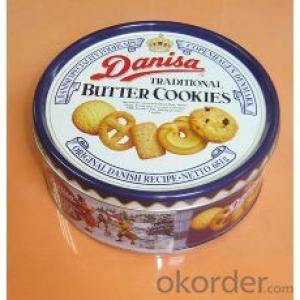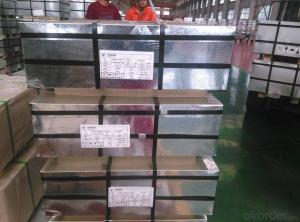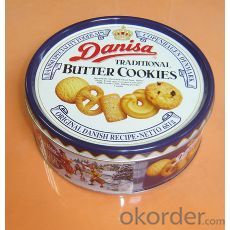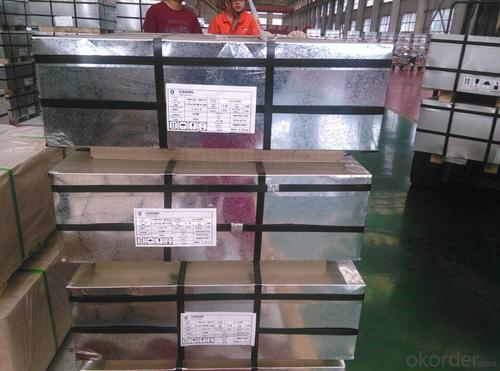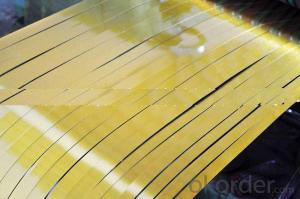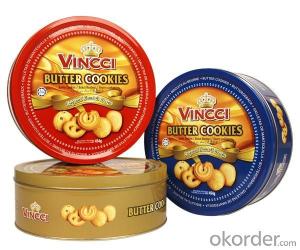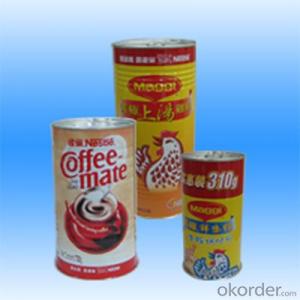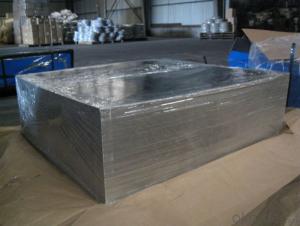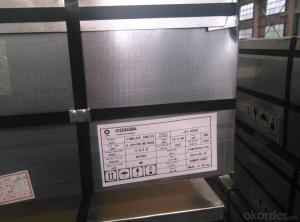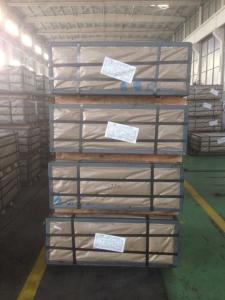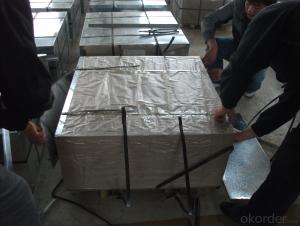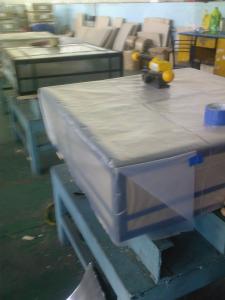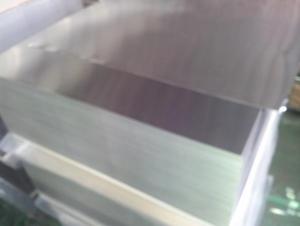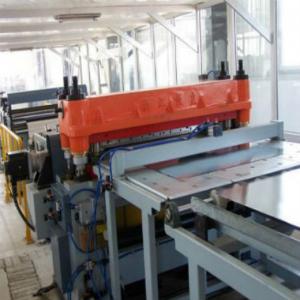Famous Tinplate For Bottle Caps, DR, MR Material
- Loading Port:
- China main port
- Payment Terms:
- TT OR LC
- Min Order Qty:
- 25 m.t.
- Supply Capability:
- 40000 m.t./month
OKorder Service Pledge
OKorder Financial Service
You Might Also Like
1.Usage
Tinplate is widely used for making all types of containers, containing industrial usage such as paint can, oil can, aerosol cans etc., and food cans like milk powder cans, tomato paste can, dry food cans etc.
2. Quality
As a state owned company and a large tinplate supplier in China, our tinplate quality ranks 1st level in China, similar to Bao Steel, Posco etc.
3. Specification
standard: GB/T2520, JIS G3303, DIN EN10202
Material: MR /SPCC
Thickness available: 0.16-0.50MM
Width available: 600~1050MM
Temper grade: T1 – DR8
Tin coating: ordinary 2.8g/2.8g, 5.6g/5.6g and others
Package: sea worthy export package.
Applications: Tin can for chemicals & paint cans, industrial cans, food cans
4. Our factory photo & equipments

5. Our Markets:
now our tinplate has been sold to more than 50 countries, including Europe country, Gulf Area, South American, South Afric etc.
6. Our Overseas Wareouses:
Furthermore, in the year 2014, we have more than 10 overseas warehouses all over the word, located in KSA, UAE, Oman, Russia, Kuwait, Qatar, Oman, Chile, Brazil etc.
7. FAQ
a. what's the annual output?
about 500,000 tons per year.
b. where's the raw matrial from?
our hot rolled coil is purchased from Capital Steel and other state owned mill, with quite good quality.
c. how long is the delivery time?
normally for SPCC about 45~55 days, while 65~75 days for MR material
d. how to control the quality during production process?
inside our workshop, we have MES syestem. It realizes the optimization of the production procedure in the workshop. It could record each step of the whole production procedures, and if some problem appears, factory could easily found and take action, it’s quite helpful to monitor and control the quality.
- Q: What are the main regulations governing tinplate production?
- The main regulations governing tinplate production vary depending on the country and region. However, some common regulations include standards for the composition of the tinplate, such as the maximum allowable levels of impurities and the required thickness of the tin coating. Other regulations may focus on safety measures, including guidelines for handling hazardous materials used in the production process. Additionally, environmental regulations often require tinplate manufacturers to comply with waste management and emissions control standards to minimize the impact on the environment.
- Q: What are the environmental impacts of producing tinplate?
- The production of tinplate has several environmental impacts. Firstly, the extraction of tin ore involves mining activities, which can lead to deforestation, habitat destruction, and soil erosion. Additionally, the refining and smelting processes used to convert tin ore into tinplate require a significant amount of energy, contributing to greenhouse gas emissions and air pollution. Furthermore, the production of tinplate involves the use of various chemicals, such as acids and solvents, which can contaminate water sources if not properly managed. Lastly, the disposal of waste materials generated during the production process, including slag and other byproducts, can pose a risk to soil and water quality if not appropriately treated or disposed of. Overall, the production of tinplate has a range of environmental impacts that need to be carefully managed and mitigated.
- Q: Can tinplate packaging be used for household products?
- Yes, tinplate packaging can be used for household products. Tinplate has excellent durability, corrosion resistance, and can be easily shaped into various forms. It is commonly used for packaging food, beverages, and other household items such as cleaning products, cosmetics, and personal care items.
- Q: How is the thickness of tinplate measured?
- The thickness of tinplate is typically measured using a micrometer or thickness gauge, which accurately determines the thickness of the tin coating on the steel substrate.
- Q: How does tinplate packaging withstand extreme temperatures?
- Tinplate packaging is able to withstand extreme temperatures due to its high melting point and excellent heat resistance properties. The tin coating on the steel base provides a protective layer that helps to prevent the metal from warping or melting when exposed to extreme heat. Additionally, the structural integrity of tinplate packaging is maintained even in extreme cold temperatures, making it a reliable choice for preserving the quality and safety of various products.
- Q: 0.25mm which melting point is low in tin plate and tin plate?
- Zinc plating on the surface of thin steel plates and steel strips by continuous hot dip plating prevents corrosion of the surface of thin steel plates and steel strips. Galvanized steel sheet and steel strip are widely used in machinery, light industry, construction, transportation, chemical industry, post and telecommunications and other industries
- Q: Can tinplate be formed into different shapes and sizes?
- Yes, tinplate can be easily formed into various shapes and sizes due to its malleability and flexibility.
- Q: How is tinplate different from other types of metal packaging?
- Tinplate is different from other types of metal packaging due to its unique composition. Unlike aluminum or steel packaging, tinplate is made by coating a thin layer of tin on top of a steel base. This provides tinplate with exceptional corrosion resistance and a glossy appearance. Additionally, tinplate is highly malleable, making it easier to shape into various packaging forms. Its non-reactive properties also make it suitable for storing a wide range of products, including food and beverages.
- Q: What are the advantages of using tinplate for medical packaging?
- Some advantages of using tinplate for medical packaging include its durability, resistance to corrosion, and ability to maintain the integrity of the packaged product. Tinplate also provides a barrier against moisture, light, and oxygen, which helps in preserving the quality and shelf life of medical products. Additionally, tinplate is recyclable, making it an eco-friendly choice for packaging.
- Q: How does tinplate packaging contribute to product protection against oxidation?
- Tinplate packaging contributes to product protection against oxidation due to its inherent properties. Tin is a highly corrosion-resistant material that acts as a barrier against external factors such as moisture, air, and light, which are known to accelerate oxidation processes. The tin coating on the tinplate acts as a protective layer, preventing direct contact between the product and the surrounding environment, thus reducing the risk of oxidation. This helps to extend the shelf life of products, maintain their quality, and preserve their flavor and nutritional value.
Send your message to us
Famous Tinplate For Bottle Caps, DR, MR Material
- Loading Port:
- China main port
- Payment Terms:
- TT OR LC
- Min Order Qty:
- 25 m.t.
- Supply Capability:
- 40000 m.t./month
OKorder Service Pledge
OKorder Financial Service
Similar products
Hot products
Hot Searches
Related keywords
